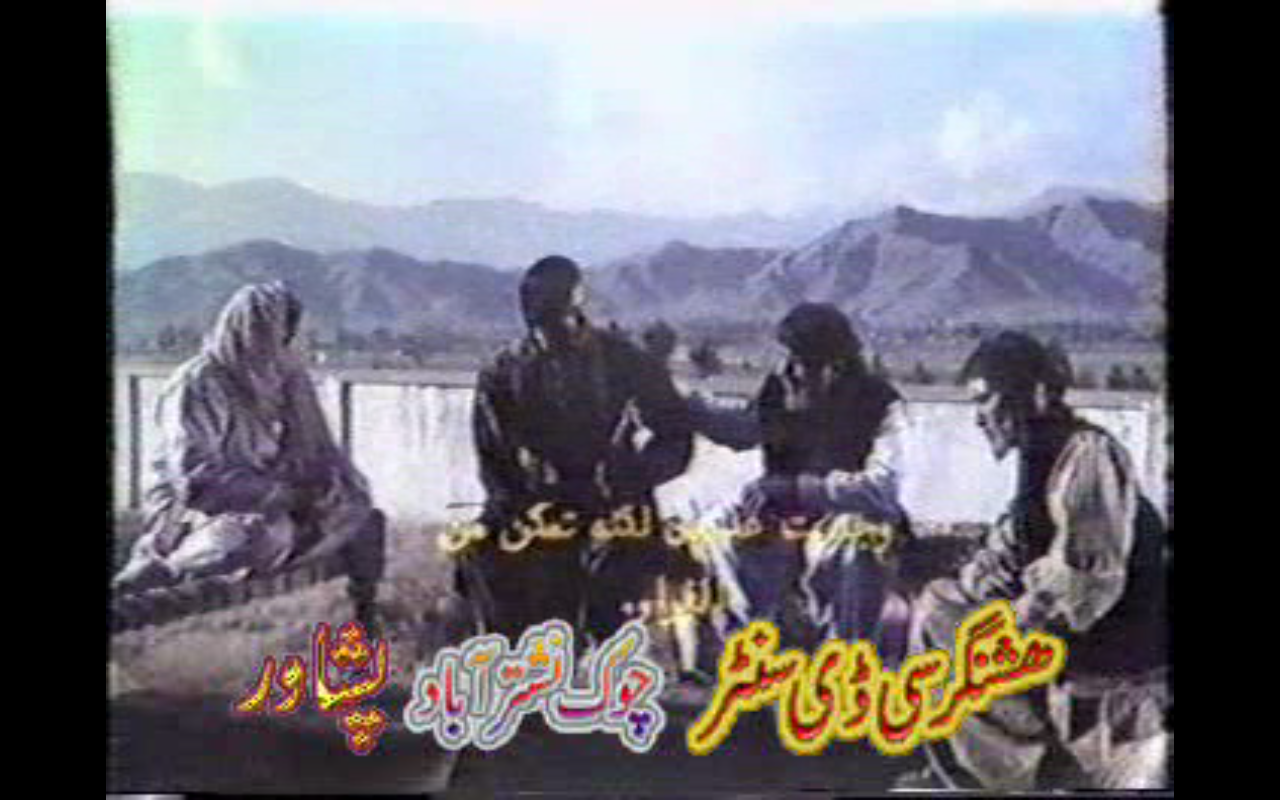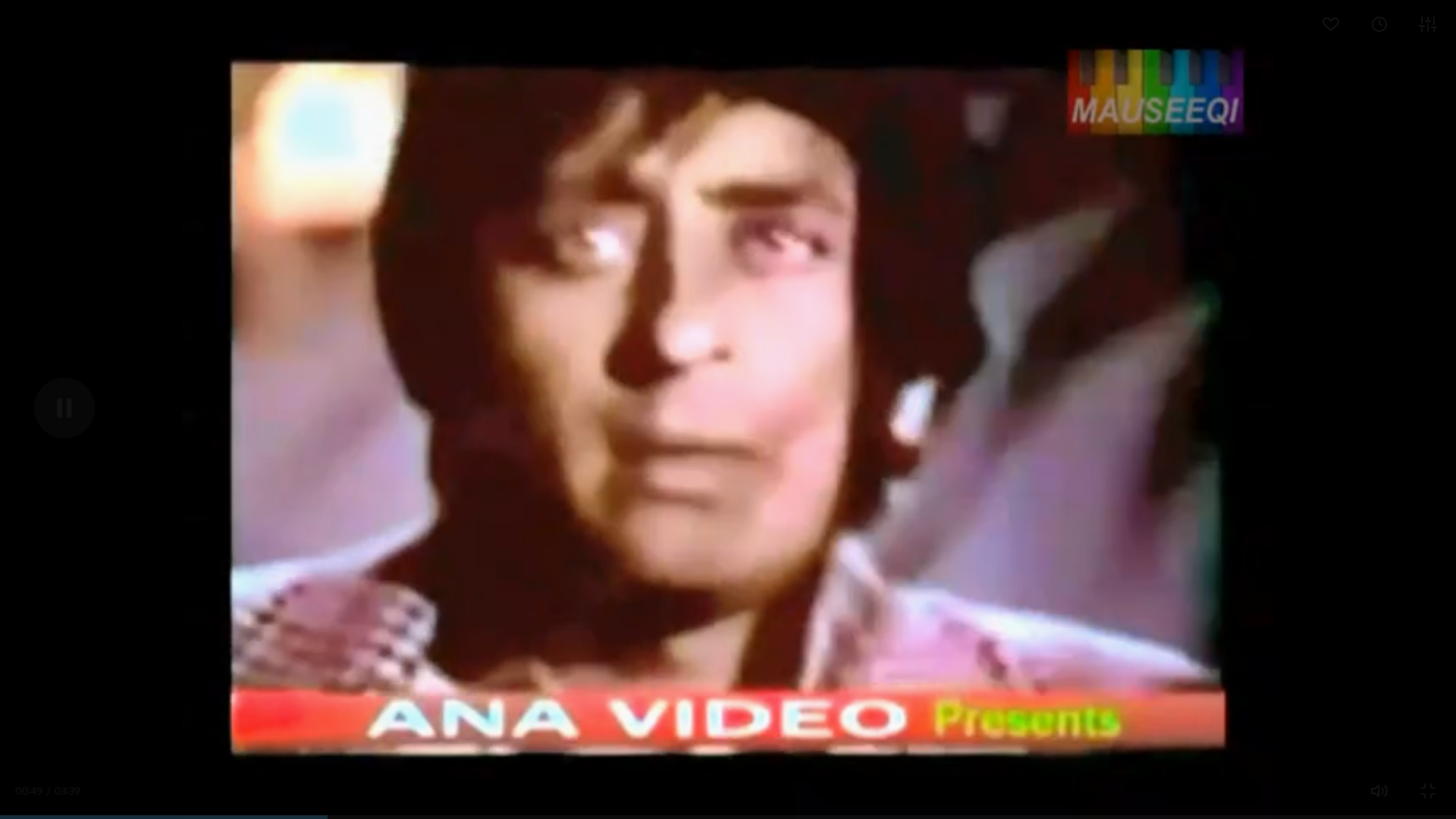On Informality and Nomadism
Torrent sites enable users to upload and download large files on the Internet to and from other users, rather than a central server; in Pakistan, where the products of visual culture have yet to be institutionally catalogued, these informal online resources are valuable libraries. Multiply copied, re-subtitled, and redistributed, the films of a century of Pakistani cinema are recorded and traded within a community-maintained black market archive, its aesthetic vocabulary marked with signs of the artifact’s struggle out of Empire, and into nomadic circulation.
Share:
“That England is populated will always come as a surprise; humans can live on an island only by forgetting what an island represents.”1
“Nobody has tried it, but in Pakistan I have. Somebody has to do it. We can’t accept the status quo.”2 Iqbal Geoffrey, writing here in 2005, refers to his intention to subject a selection of employees of London’s Hayward Gallery to polygraph tests to reveal data evidence of what he suspected to be inherent racism. The Pakistani artist, and prominent lawyer, was in the process of filing a claim of racial discrimination against the Hayward Gallery under the recently introduced Human Rights Act. It was his claim that his works left over from a 1989 show were destroyed or mislaid through the active collusion of curators, staff, and cleaners. For the 160 works lost, and the 140 damaged, the artist was offered £65,000, but he instead launched a £65 million claim. Geoffrey, whose biography is shrouded in self-mythology (the Queen, in a rare show of lexical dexterity, reportedly called him the “Arts Counsel of Great Britain”) and audacious acts of career sabotage (including submitting his PhD thesis to the Harvard Law School in the form of a stack of bound black pages), was once one of the leading lights of the early 1960s London art scene.3 In protest over what he saw as the “cultural apartheid” of the British milieu, Geoffrey became a partially reclusive figure, and his calligraphic abstractions have given way to an extensive series of mail art projects and litigious interventions.
The short narrative of Iqbal Geoffrey reflects many of the core issues concerning the modern repatriation of cultural objects sent abroad, their dispossession, and these processes’ resulting archival and museological dissonance—with which it will be possible, for instance, to fashion at least one contextual framework for Tate Britain’s exhibition, Artist and Empire, opening in autumn 2015. In time-honored fashion, this major introspective will catalogue the various responses to empire that can be read by reimagining the trade routes and trajectories of collecting habits from point B (the colony), to point A (the metropole). Geoffrey’s lavish call for reparations is symptomatic of serious unease and imbalance within and with regard to prevalent Western museum politics and curatorial models. These will no doubt be eloquently explored by Okwui Enwezor when he curates the 2015 Venice Biennale; but, leaving the circumambulation of this well-trodden path to the experts, we can turn our attention to informal networks of cultural flow, correlative but not imitative of the exporting of images of empire in the 19th century, and the afterlives of those museums left over, like empty munitions factories in the former colonies.
MOBILE AND MIGRATORY ARCHIVES
If demands for the repatriation of art and artifacts looted under colonial rule often expose the fragile relations between nations formerly entangled in one of the imperial projects, the non-existence of a Pakistani film archive is illustrative of another kind of cultural heritage crisis. For many present-day countries with which Pakistan shares a border or pre-partition genealogies, archival projects have been constituent elements of post-independence nation-building efforts. During the months I spent living and working in Pakistan in early 2013, I developed a fascination with the frequency of technological interruption there—evidenced primarily in rolling power outages—and with the ways in which domestic moving image media nevertheless travels across, and circulates between, informal distribution networks, both gathering meaning and deteriorating in resolution as it goes. Due to the lack of a state archive, the earliest carrier of golden era Pakistani films held in government repositories is the video compact disc (VCD): a format home to films first pirated in the 1980s or 1990s, many still complete with watermarks asserting the appropriated ownership of their contents—reminders of the shared memory of media storage. Enabled by pirate distribution channels, the informal spread of these orphaned films has created what I have, in previous writings, termed a “black market archive,” a cultural legacy—in this case, Pakistan’s cinematic heritage—that has survived thanks only to unsanctioned trade and networks.
The original films bear witness to a time when Pakistan was the world’s most populous Muslim country, and when emerging Emirati states looked to its capital, Karachi, as an urban model. This era corresponded to golden one in post-independence film production, reaching levels of thematic exuberance that often bested the imagination of their Bollywood counterparts. The black market archive descriptor reveals how media migrates across and within the socioeconomic borders of the post-colony, and is an appropriate starting point from which to explore the cultural pressures, modalities, and value systems that led to the establishment of a surrogate archive of Pakistani film through the informal spread of pirate media—and to question the anthropological significance of a visual archive of informality.
In the notable absence of a Pakistan state holding of film artifacts, it has been left to the parallel infrastructures of pirate media to preserve these works of public culture by disseminating them in copy. When the British Film Institute donated the earliest extant moving images from the Indian subcontinent to the newly established National Film Archive of India, Pakistan was denied its colonial lineage. This dispossession became institutionalized in the Pakistani government’s own approach to regional film production; in the micro-industries of Pashto-, Sindhi-, and Balochi-language cinema are found the seeds of secession and discontent with Pakistan as a cohesive identity. Yet this institutional disinterest in ascribing ownership to film works has found curious counterpoint in the pirate film trade’s tendency to successively multiply ownerships. The discordant surfaces of Pakistani films available on sites such as DesiTorrents—an invitation-based Indian torrent site where users do the file serving, and membership can be aggrandized by share ratios—are replete with watermarks, many of them designed by the media outlet responsible for the most recent transfer with the sole intention of obscuring the one beneath. One notable Pakistani cineaste is the prolific Dr. Hassan Bukhari, whose “World of Music and Movies” provides an extensive film library, as well as a mail-order service for film fans who do not wish to venture into bazaars (actual or virtual). Bukhari has also begun uploading self-subtitled versions of films to accompany his watermarked files. Following the tradition of marking archival visual territory with an imprint asserting adopted ownership, Bukhari’s insignia adds another layer to an existing terrain.
More commonly associated with anticounterfeiting measures, the ubiquity and active competitiveness of Pakistani watermarks add an ever-present sense of irreverence to any film. For speakers of one of Pakistan’s 55 nonofficial languages, the British-era English legal code and the hegemony of Urdu render the formal infrastructure of Pakistan at times indecipherable. As such, there is a great public desire for token fragments of linguistic autonomy evidenced in long-departed tele-dramas, or musical numbers in classic films. In a fine evocation of the autonomy of the informal aesthetic, uploaders such as Bukhari have even loosely rendered Pakistan’s first film song in the Saraiki language—in the form of a video clipped from the full film—into 3-D, thus actively inscribing his name on the spatiotemporal surface of the 1974 film Samaj (made, incidentally, by Bukhari’s close relative). Asserting reownership across informal networks in this way aspires to the distribution modes of formal cinematic attractions, complete with the production of subtitles for international audiences, 3-D effects, or guarantees of high definition. The hallmarks of media informality can thus be seen as both an assertion of industry savvy and as a generative art form that provides the tools not only for its own geographic spread but also for the formation of its singular identity.
Loosely defined, informality traces an asymmetrical but closely correlative path in opposition to regulation, government, and authorized distribution. As a postcolonial cultural space, informality also demarcates a margin for mediocrity. Although it is easy to consider informal networks paths to refusal, and while informality both allocates and generates, it is also sustained by the widespread exploitation of migrants and the underemployed. Writings on informality first stemmed from research into housing, architecture, and urbanism, and have only recently reached the field of media studies—for instance with Ramon Laboto’s Shadow Economies of Cinema: Mapping Informal Film Distribution (2012), and the material anthropological studies of Ravi Sundaram and Brian Larkin. Certainly its projection onto the territorialized topographies of contemporary art would yield insights into a world where formality is the exception rather than the rule, and where the circulatory dynamics of cultural and aesthetic value are high-impact factors in the global art market.
The European in the colonies always liked to think of himself as a nomad in direct communion with a deserted island—be it as the receptive audience of artistic flows, perched in the prefab governing houses of the new urbanity, or as someone seeking sanctuary from the heat in the hill stations. As Deleuze notes, this “desert island” thinking is a product of the geographer’s, the explorer’s, or the wanderer’s imagination: it is a site of fulfillment, both witness to the beginning of the world and figuratively located at the end of it. “In the ideal of beginning anew there is something that precedes the beginning itself, that takes it up to deepen it and delay it in the passage of time. The desert island is the material of this something immemorial, this something most profound.”4 This profundity is the imagined territory of a shared humanity that has never achieved a sedentary state. Deleuze’s island takes form as either a site of arrival from a place of departure—a new start—or a place of solitude, for the lost. In this short essay are the correlative trajectories of the originary and the imaginary, the shared birthplace both of primitive civilization and the concept of a land without people. Read through Deleuze, the colonial European, while attempting to people the deserted island in his own image, finds that his projected imagination is brokered by his unshakeable desire that the island remain deserted. Like Deleuze’s originary world, surrogate archives of informality and media piracy are the products of the alternately impermeable and porous surface that is the home of this idealized nomad, with one sedentary foot on the deserted island.5
Viewing the archive as animator of all of the material triggers that denote lived human heritage, at the beginning of this century Arjun Appadurai heralded the arrival of its non-hierarchical digital version, and its “para-human characteristics.”6 Therein Appadurai established a connection between the archive and the concept of a migratory identity, citing the ability to aspire to memorialize as a key machination of the imagining of a site of arrival, of a future host. The perceived migrant archive confines itself to the collective memory of an intangible store of shared experiences. These fragments of public culture, while lacking brick-and-mortar homes, have in the last decade found agency in Dr. Bukhari’s oldsongshop.com, and peer-to-peer diasporic file-sharing resources such as DesiTorrents. “What we may call the diasporic archive, or the migrant archive,” Appadurai notes, “is increasingly characterized by the presence of voice, agency and debate, rather than of mere reading, reception and interpellation.”7 Positioned between sites of departure and arrival, migrant archives are borderless zones that exist at the juncture between Deleuze’s originary and imaginary.
The artist and essayist Hito Steyerl has described the fractured surface quality of recopied and reformatted works, which are inscribed with the material evidence of their retransmission—and warned of the dangers of fetishizing informality and the orphaned artifact that finds agency in an archive of velocity. While challenging the immaculate, pure visuality of an image hierarchy of high resolution, Steyerl also notes that what she calls “poor images” have become “perfectly integrated into an information capitalism thriving on compressed attention spans, on impression rather than immersion, on intensity rather than contemplation, on previews rather than screenings.”8 Steyerl’s theoretical and art practical work addresses itself primarily to video and moving image rendered invisible due to intentioned concealment, or small viewership. The “intensity” she describes is that of exclusivity; the “impression” she describes is one placed on the viewer via the image tempered by a different distribution system. The “preview” mentioned pertains to content compressed for consumption, but more specifically recalls the .jpeg screenshots found beside the large files available on DesiTorrents or the film tracker Karagarga, which reassure the sharer (“seeder”) of the quality of the upload’s compression. WhileAlthough Steyerl’s reading provides an elegant vocabulary with which to approach the nomadic spread of media, it does not quite manage to express the visual economy of media piracy, which operates largely without previews, and appeals as much to the dispossessed body of the mobile spectator as to their the spectator’s concept of concentrated time.
Despite the promises made on informal VCD covers—where such terms like as “Blu-Ray Disc” and “Widescreen Original Print” accompany crisp digital idents and samples denoting quality—the visual archive of Pakistani cinema is invariably dissonant, ridden with glitches from exponentially lossy data transferal. In the Pashto family drama movie Jang aw Amn (1974), for example, a single frame glitch endures for more than ten minutes. The frozen image—in this case, a tableau of reconciliation—appears to hint insistently at a buried meaning. Much like the “cineseizure” of experimental filmmakers such as Martin Arnold or Peter Tscherkassky, whose Austrian found footage works extend mere seconds of Hollywood films into much longer narratives, the glitch creates a serendipitous, radical realignment of images from the leftovers of culture. The result is a form of counter-history, an active interrogation of images and sounds carried forth by the archival dissonance encountered as media carriers’ watermarks compete for position with subtitles.
ITINERANT CINEMA, INFORMALITY AT THE MUSEUM
Returning to more formal repositories of material artifacts, it would seem that the indestructible, intangible archive of postcolonial Pakistani cinema is preferable to the manner with which the United Kingdom has dealt with the conservation of its colonial heritage. A popular suspicion that I encountered in Pakistan is the belief that heritage workers, cleaners, and guards at archaeological sites and institutions from the Lahore National Museum to the ruins of Mohenjo-daro have been stealing and selling original artifacts, and replacing them with replicas. This notion of the shady state employee stealing the last remnants of a national cultural heritage seems to fill in as a substitute for the all-controlling force of colonial power, which really did loot ancient sites and museums. Such corrupt practices did not end with the empire, and they are not restricted to overseas possessions: The Art Newspaper reported in 2011 that the British Empire and Commonwealth Museum in Bristol had closed due to a scandal involving the director allowing private parties to purchase items from the collection.9 About 150 items were removed for direct sale to collectors, effectively ushering informality, through the unauthorized de-accessioning of objects, into a museum whose official responsibility it was to memorialize and exhibit the objects in question—not to reproduce the covert modes of appropriation that led to their colonial-era displacement.
The genealogy of Bristol’s and similar empire museums began in 1887 with the establishment of what was then called the Imperial Institute (now The the Commonwealth Institute) in London. Its collections reflect the reception of art in England and mainland Europe that had, in acquiring such objects and assimilating them into the everyday fabric of national life, “already creolized or hybridized” itself, as Christopher Pinney has argued in “Creole Europe: The Reflection of a Reflection.” 10 The deserted island of England peopled itself through a collage of nomadic traces. In partitioned India, meanwhile, the British left scattered museums in both new urban projects and lonely hill stations, where once they retreated from the summer heat. Housing all manner of archeological, ethnological, geological, and zoological artifacts, such edifices were often founded at the sites where such findings had emerged, or where fruitful excavations had taken place; in this material context, works of visual art were often relegated as to the status of illustrative or decorative objects for export.11
The appropriation, export, and institutionalization of art from colonial India to Europe was enabled by a large-scale process of informality wherein the archipelago of companies—namely, the East India Company—operated in tandem and in parallel with the sovereign government. A statement made in 2012 by the Bristol Record Office (BRO) revealed that the personal fragments, testimonies, and riches that constituted the British Empire and Commonwealth Museum’s collection had fallen into their care. I recently enquired into the accessibility of The the Sharma Archive in its new home at the BRO and discovered that the whereabouts of its contents are currently unknown. The reference catalogue of its oral history holdings—30 videotapes and 67 audio tapes made by filmmaker Partap Sharma, including interviews and footage of Indian nationalists, freedom fighters, and writers—only hints at the indispensible contents of this resource, which contains testimonies and accounts of the personal interactions between art objects and empire.
The reference catalogue of the Sharma Archive contains a synopsis of one account which seems to sheds light on the nomadic exchange, production, and circulation of images in the Indian subcontinent: “An interesting story of a little known side of the British Raj—the services supplied by Indians to the British troops. In this case, Mr Qureshi’s grandfather founded a photographic studio solely for the purpose of taking photographs of the troops …. In the summer the photographic business went to the hill stations because the intention was to continue earning money from the services provided …. He mentions other businesses supplying troops—cobblers, blacksmiths, tailors, etc. He also talks of British troops learning to play and sing Indian music.”12
Not only did enterprising individuals travel to offer their services as photographers to convalescing troops in hill stations and sanatoriums, but travelling cinemas also operated as an analogous industry to the permanent theaters of the colonial cantonments and European areas. In their portrayal in a 1928 report by the Indian Cinematograph Committee, these nomadic cinemas resemble predecessors of pirate media outlets, and their informal media networks: they “come into existence and pass away,” according to the report, and “generally carry with them their own tents and benches, transported on bullock-carts. They halt for varying periods at the centres they visit, in some cases making a stay of two or three months. Naturally, they do not need to change their programmes in the same way as a permanent cinema …. Ordinarily they exhibit old second-hand western films which can be purchased very cheaply, and according to our information these films are generally much worn and in very poor condition.”13
The report refers to these caravans as “itinerant cinemas,” and seems to take a paradoxical line on their activities, wavering between advocating appropriating them as a vehicle for propagandistic cohesion within the empire and penalizing their borderless activities for operating outside of the formal licensing arrangements.14 Whatever the reception, such nomadic activity was a key characteristic of informal cultural transmission in British India that, at times, both briefly evaded the West and journeyed to fill the gaps in the infrastructure of its more remote outposts.
MOBILE LIVES, INTIMATE ACCESS
In contemporary Pakistan, mobility is a sign of affluence and political agency. In 2014, anti-government demonstrations in Islamabad brought the idiosyncratic presence of shipping containers to the attention of global news outlets: whenever reports of street protests circulate, so do images of the large shipping containers used to block thoroughfares where citizens are expected to congregate; last summer, they barred almost every road to the capital.15 These steel units resonate with the associations of mass export, people trafficking, and smuggling. They have been turned into living quarters and podiums, for personages such as Imran Khan, founding leader of the Pakistan Tehreek-e-Insaf (PTI) party. Designed to facilitate trade, and appropriated to enable covert mobility of humans (through trafficking), here Pakistani shipping containers physically intercede into an imaginary space of aspiration and access. Linked closely to the concept of a peopled territory, they correlate with the inscribed nomadism of the black market archive.
Somewhere between the archeological dig and the accessioning of a museum, a space can be seen to unfold in the audience-driven circulation of Pakistani media, the artifacts of which are accessible from an orbit rather than from the earth. The case filed by Iqbal Geoffrey, DesiTorrents, and the British Empire and Commonwealth Museum, are haunted by traces of Pakistan’s visual cultural archive—nomadic ghosts of empire that evade the exoteric movements of decolonization in favor of fluid, informal modes of transportation. Surrogate archives—informal islands—form where they coalesce.
This feature originally appeared in ART PAPERS March/April 2015.
All images from Dr. Bukhari’s website.
Timothy P.A. Cooper is an independent programmer, journalist, and researcher, whose work is grounded in both anthropology and media history. Cooper’s writings explore the labor habits of pirated media, its artistic capital, and informal infrastructure, as well as modern visual hierarchies of both aesthetic and anthropological value.
References
| ↑1 | Gilles Deleuze,. “”Desert Islands: And Other Texts, 1953––1974.” (2004), 9 |
|---|---|
| ↑2 | Jamie Doward, “Artist accuses top gallery of racial prejudice,” The GuardianThe Guardian (Jan. 5, 2005): http://www.theguardian.com/uk/2005/jan/16/arts.artsnews2 |
| ↑3 | Zoha Haider (ed.), The Art of Iqbal Geoffrey: Drawings and Collages 19412-–2008 (Islamabad(Lahore: National Art Gallery, 2008) |
| ↑4 | Deleuze, 14. |
| ↑5 | Deleuze and Guattari also discuss nomad art in terms of its haptic and tactile responses to territorial flows and nonhierarchical visuality. See Gilles Deleuze and Félix Guattari. A Thousand Plateaus: Capitalism and Schizophrenia (London: Bloomsbury Publishing, 1988) |
| ↑6 | Arjun Appadurai, “”Archive and aspiration,”” Information is Alive (Rotterdam: V2 Publishing, 2003): 14 |
| ↑7 | Ibid, 22 |
| ↑8 | Steyerl, Hito Steyerl,. The Wretched of the Screen (Berlin: . Sternberg Press, 2012), 43 |
| ↑9 | Gareth Harris, “Rise and fall of the British Empire museum,” The Art Newspaper. (09/03/2011): http://www.theartnewspaper.com/articles/Rise-and-fall-of-the-British-Empire-museum/24476, |
| ↑10 | Christopher Pinney, “Creole Europe: The Reflection of a Reflection,” Journal of New Zealand Literature: JNZL (2002):, 126 |
| ↑11 | For an intensive study of South Asian museology, see Bhatti, Shaila Bhatti,. Translating Museums: A Counterhistory of South Asian Museology. (California: Left Coast Press, 2012) |
| ↑12 | Voices and Echoes: A catalogue of oral history holdings of the British Empire & Commonwealth Museum (Bristol: British Empire & Commonwealth Museum, 1999) |
| ↑13 | Indian Cinematograph Committee, Report of the Indian Cinematograph Committee, 1927–28 (. Calcutta: Government of India Central Publication Branch, 1928), 24–25 |
| ↑14 | Ibid, 86 |
| ↑15 | Timothy Cooper, “Welcome to Containerstan: how the shipping container took over the world,” The New Statesman , February 4, 2015: http://www.newstatesman.com/politics/2015/02/welcome-containerstan-how-shipping-container-took-over-world |








